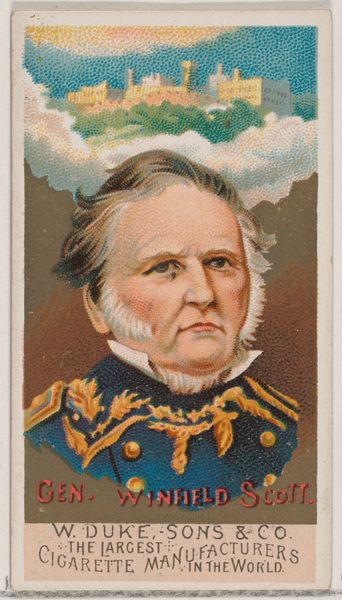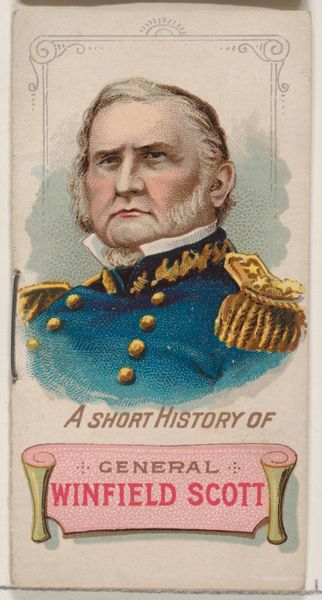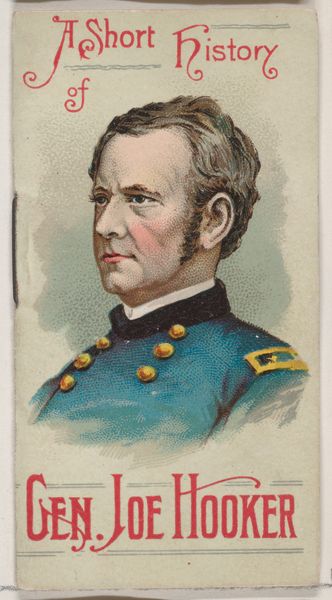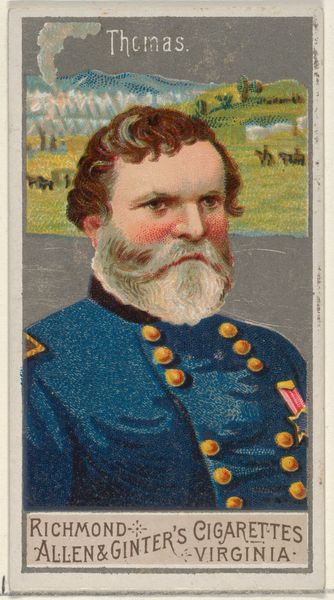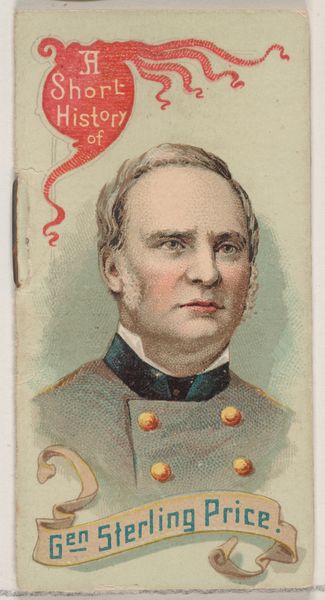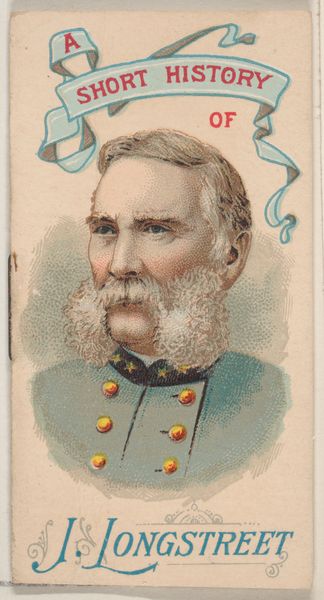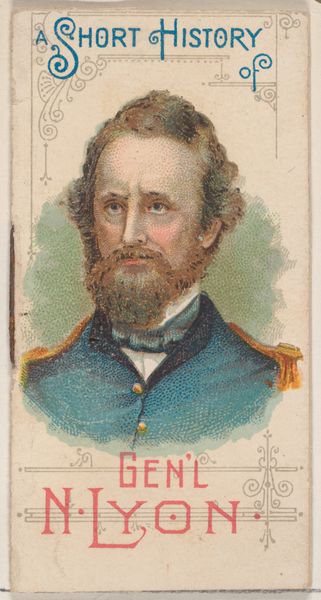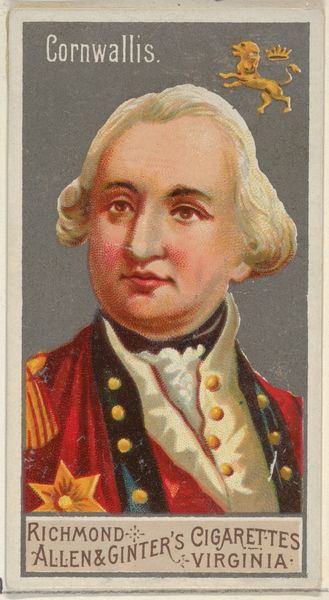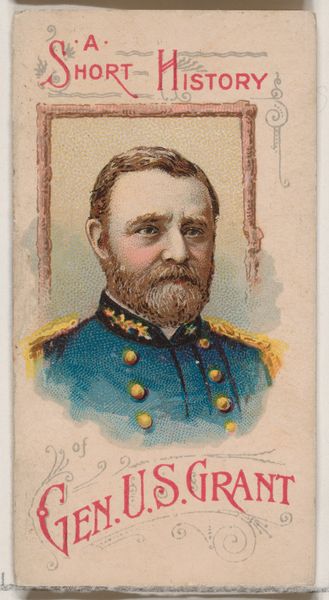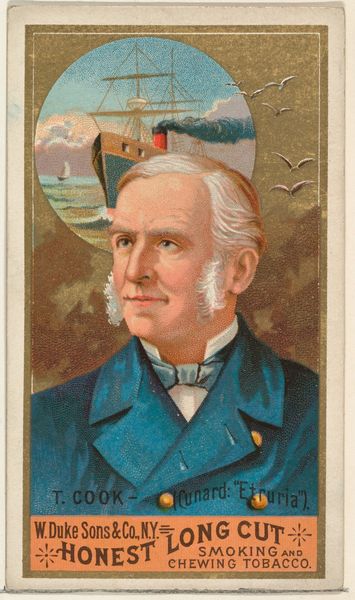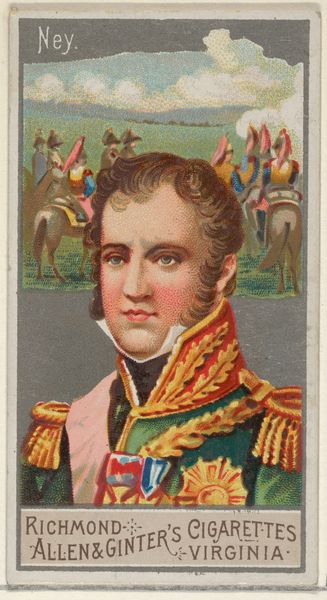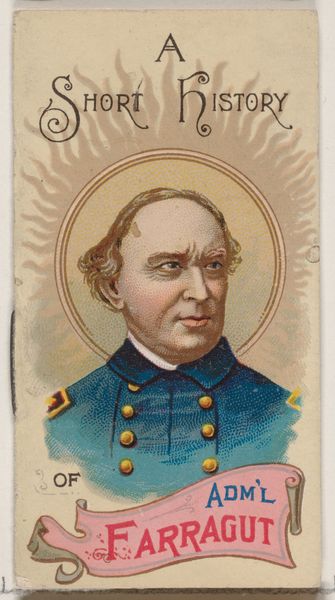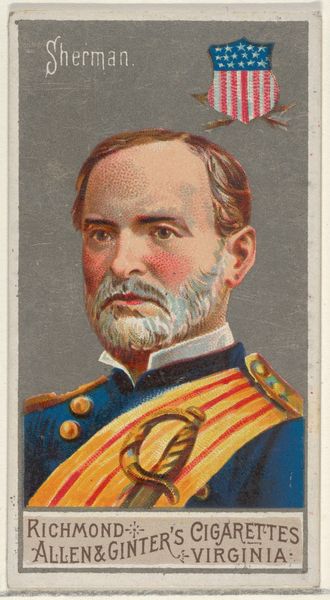
Winfield Scott, from the Great Generals series (N15) for Allen & Ginter Cigarettes Brands 1888
0:00
0:00
drawing, lithograph, print
#
portrait
#
drawing
#
lithograph
# print
#
impressionism
#
oil painting
#
men
#
portrait drawing
#
portrait art
#
watercolor
Dimensions: Sheet: 2 3/4 x 1 1/2 in. (7 x 3.8 cm)
Copyright: Public Domain
Curator: This small lithograph, dating from 1888, comes from a series entitled "Great Generals." It's part of a set of cigarette cards produced by Allen & Ginter. The subject here is Winfield Scott. Editor: Immediately, the rosy cheeks stand out against the almost severe military bearing, it's a striking contrast. The format suggests that its an object that fits into a larger network of display. It appears to flatten or even distort the individual for capitalist consumption, to what ends I wonder? Curator: That’s right. These cards weren’t conceived as fine art. They served primarily as advertisements, slipped into cigarette packs as collectibles. The aim was to associate a brand with cultural capital, here the legacy of these generals, and their military prowess. Editor: Right, a kind of aggressive marketing maneuver! It is still fascinating how the general's image is framed within this capitalist endeavor. How does the backdrop, with what appears to be a grand building or fort, amplify notions of authority or imperial project? Curator: The architectural structure does support those narratives. Allen and Ginter appealed to a specific consumer demographic: middle- and upper-class men who desired to assert their status through particular types of consumption. The portrayal of figures like Scott aided that identity building. Editor: But what about the tension created? It is unsettling to see the valorized historical narrative linked with cigarette consumption. We are compelled to confront not only issues of health and promotion of it, but the normalization of these historical narratives through products that people engaged with. Curator: Absolutely, there are conflicting levels to observe. Even the technique is interesting; this type of chromolithography allowed for color reproductions that previously only paintings would receive, allowing for widespread dissemination and visual culture. Editor: And now, how do we view that complicated web of historical association between the legacy of individuals and the objects marketed through their identities, that, more often than not, exclude many people of color and women. The power dynamics are implicit, of what kinds of identity gets platformed, who and what histories get flattened in these kinds of images. Curator: It makes us ponder the role of ephemera like this one. These small images hold surprising layers, they provide potent glimpses into both American ambition and historical perspectives of commodity and image distribution. Editor: The image lingers in the mind. Despite being something that easily goes unnoticed and maybe thrown away, it compels one to engage with its social and political context as a starting point of its consumption.
Comments
No comments
Be the first to comment and join the conversation on the ultimate creative platform.
